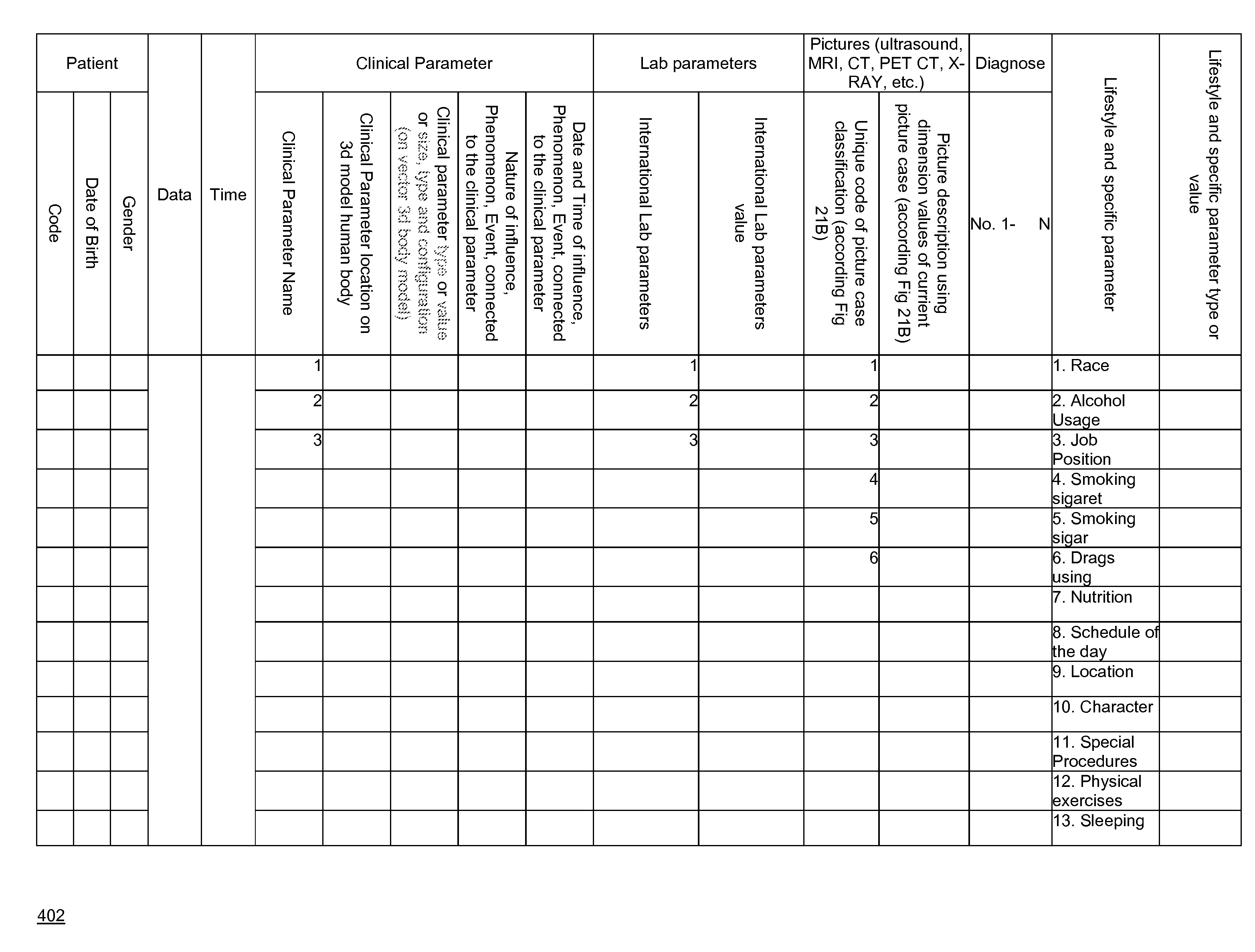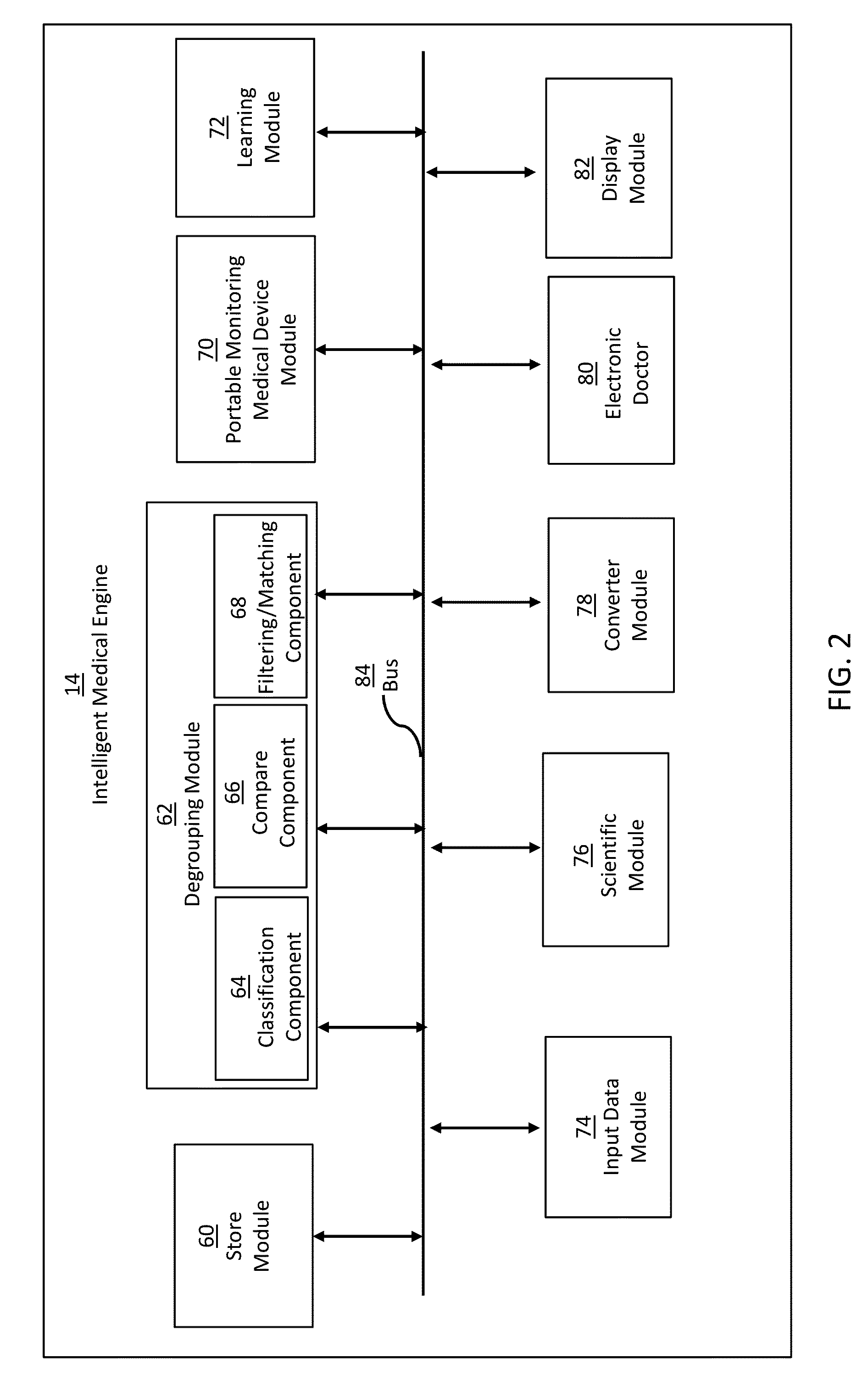Computational medical treatment plan method and system with mass medical analysis
a medical treatment plan and mass medical technology, applied in the field of computer software, can solve the problems of complex sharing of patient information, relatively limited access of doctors to patient information beyond their practice and published literature, and achieve the effect of reducing some privacy concerns
- Summary
- Abstract
- Description
- Claims
- Application Information
AI Technical Summary
Benefits of technology
Problems solved by technology
Method used
Image
Examples
example 1
Determining a Course of Treatment for a Patient with Breast Cancer
[0193]For breast cancer, the first level parameters may include tumor features such as the following: (1) invasive or in situ; (2) if invasive, whether the tumor has metastasized; (3) ductal or lobular; (4) stage; and (5) grade.
[0194]The second level parameters may include the presence of tumor markers, such as estrogen receptor (ER), progesterone receptor (PR), human epidermal growth factor receptor 2 (HER2), cancer antigen 15-3 (CA 15-3), cancer antigen 27.29 (CA 27.29), and carcinoembryonic antigen (CEA), urokinase plasminogen activator (uPA), and plasminogen activator inhibitor (PAI-1).
[0195]The third level parameters may include the patient's general conditions such as age, personal history of breast cancer (if recurrence) and ovarian cancer, family history of breast cancer, inherited risk and genetic risk (presence of mutations in breast cancer genes 1 or 2 (BRCA 1 or 2)), exposure to estrogen and progesterone, ...
example 2
Determining Course of Treatment for a Patient with Lung Cancer
[0199]For lung cancer, the first level parameters may include: (1) type; (2) stage; and (3) grade.
[0200]The second level parameters may include presence of mutations of oncogenes for determining whether a patient would benefit from NSCLC targeted therapies. Such oncogenes include (1) epidermal growth factor receptor (EGFR); (2) Kirsten rat sarcoma onocogene homolog (KRAS); and (3) anaplastic lymphoma kinase (ALK). The second level parameters may also include markers of neuroendocrine differentiation of small cell lung cancer, such as (1) creatine kinase-BB, (2) chromogranin, and (3) neuron specific enolase; and of small peptide hormones, such as (1) gastrin-releasing peptide, (2) calcitonin, and (3) serotonin.
[0201]The third level parameters may include the patient's general conditions such as age, personal history of lung cancer, family history of lung cancer, and race and ethnicity.
[0202]The fourth level parameters may ...
PUM
 Login to View More
Login to View More Abstract
Description
Claims
Application Information
 Login to View More
Login to View More - R&D
- Intellectual Property
- Life Sciences
- Materials
- Tech Scout
- Unparalleled Data Quality
- Higher Quality Content
- 60% Fewer Hallucinations
Browse by: Latest US Patents, China's latest patents, Technical Efficacy Thesaurus, Application Domain, Technology Topic, Popular Technical Reports.
© 2025 PatSnap. All rights reserved.Legal|Privacy policy|Modern Slavery Act Transparency Statement|Sitemap|About US| Contact US: help@patsnap.com



